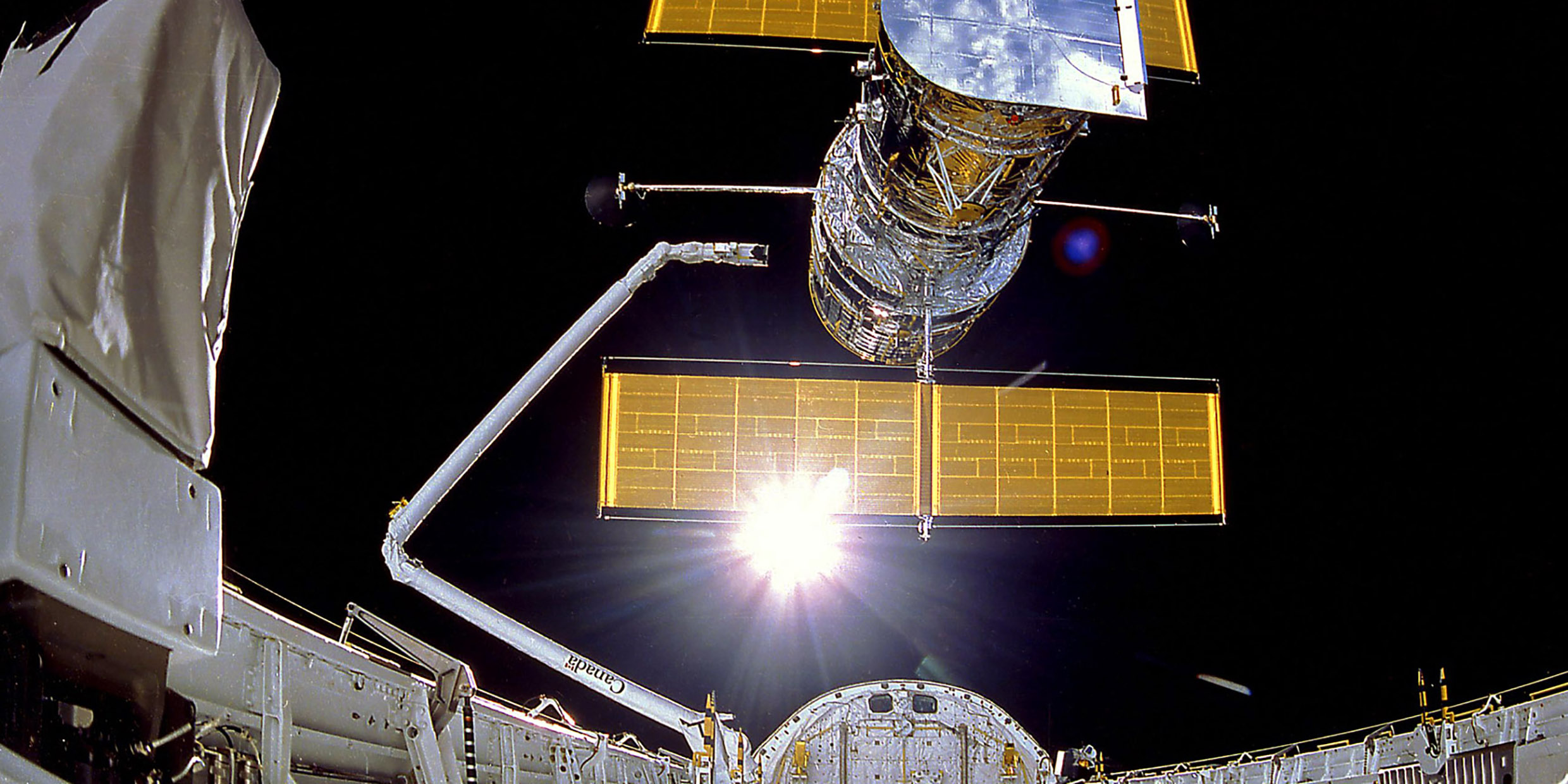Originally published 26 January 1987
One year ago this week [in January 1986], the Space Shuttle Challenger exploded shortly after takeoff, taking seven astronauts to a fiery death. Evaluation of the accident and redesign of the shuttle and booster rockets has interrupted the launch schedule for at least two years. For astronomers, the grounded shuttle has meant a frustrating delay in deployment of the Hubble Space Telescope, one of the most remarkable instruments in the history of science, and one that has the potential to revolutionize our knowledge of the universe.
The Hubble telescope was scheduled to be launched last year. It is presently resting in a test rig at the Lockheed Missiles and Space Co. in Sunnyvale, Calif. It costs NASA at least $3 million per month to maintain the space observatory in flight-ready condition. At the earliest, it will be late in 1988 before the telescope is placed in orbit.
The delay is not time being wasted. The components of the telescope are being made better and checked and rechecked. By the time the telescope is lofted above the Earth’s atmosphere, it will be one of the most thoroughly tested instruments in history.
An eye on the cosmos
The mirror of the telescope is 92 inches in diameter. That is not half the size of the Hale Telescope on Mt. Palomar, but by being above the murky barrier of the Earth’s atmosphere, the telescope will have a resolution (ability to distinguish detail) that is five times better than the best ground-based observatories. The incredible stability of the orbiting observatory will mean that it can be pointed accurately at an astronomical object for a long period of time, accumulating more and more light with its sensitive cameras. Long exposures will enable astronomers to see much deeper into space than ever before.
The telescope will cap a decade of extraordinary innovations in astronomy. New materials and technologies have enabled astronomers to build big ground-based telescopes cheaply. Electronic detectors amplify weak light from celestial objects. Lasers and atomic clocks make it possible for telescopes to work in tandem, increasing their light-gathering ability and resolution. Computers process digital images, sharpening resolution and contrast. The goal of all this inventiveness is to squeeze a maximum amount of information from starlight.
It is worth thinking for a few moments about how starlight makes its way to our eye — or to our telescopes. A star’s light moves out from the surface of the star in every direction, into the great emptiness of interstellar space, becoming always more dilute.
Ever-expanding spheres
You can think of the energy that leaves a star — Vega, say — as being carried away from the star on the surface of an expanding sphere. The radius of the sphere increases at 186,000 miles per second, the speed of light, distending the star’s light over an ever-increasing area, stretching the energy density always thinner. At our distance from Vega — 27 light-years — that star’s light is dispersed over a surface with an area of 315 octillion square miles (an almost unimaginably large number; 315 followed by 27 zeros). When we see Vega, it is with the infinitesimally small fraction of Vega’s light that just happens to fall upon the pupils of our eyes.
How can I suggest how little of Vega’s light our eyes actually gather up? If the light radiated by Vega at a particular instant is compared with all of the sand on all of the beaches of the world, then the fraction of the light that will eventually enter my eye is a single grain.
No, the analogy is not yet mathematically correct. Let the light radiated by Vega be compared with the entire material bulk of the planet Earth; then the fraction of the energy that will be collected by the largest telescope on Earth is still less than a mote of dust. It is out of that mote of starlight that the astronomer extracts knowledge of the star.
I can work all of this out on paper, and still it seems a miracle. On a starry night, the light of a thousand stars may enter my eyes in sufficient quantity to enable my brain to form images of the stars. A thousand distinct wavelets of energy enter my eyes at slightly different angles from out of the depths of space, and by some miracle of perception my eyes and brain sort it all out, put each star in its proper place, discern its color, and recognize the constellations.
Of the flux of starlight that reaches Earth, astronomers, with the proper instrumentation, can deduce the sizes, distances, densities and compositions of the stars. The history of astronomy has been the search for ways of accumulating more and more of that gentle rain of starlight that falls upon the Earth, and of finding ways to extract the information it contains.
The Hubble Space Telescope, when it goes into orbit, will be a giant step forward in the technology of soaking up starlight. In the meantime, Earth-bound astronomers will continue to find new ways to squeeze knowledge from the starlight that even now is falling upon the Earth.
The Hubble Space Telescope was eventually launched in 1990, and after some initial technical problems, it became the revolutionary instrument that astronomers had hoped for. ‑Ed.



